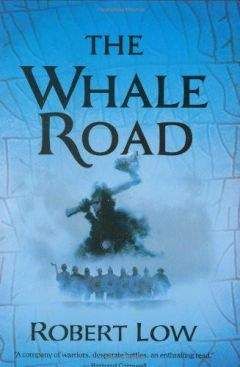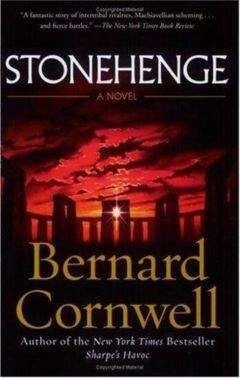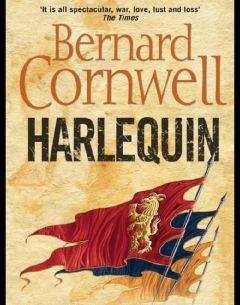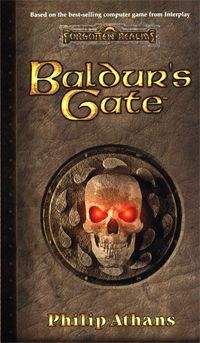Ознакомительная версия.
He did have a famous battle-winning sword and both he and it seemed to have been interchangeably called The Scourge of God—but who made it, its twin and what they were made from is also my own invention.
The Volsungs are real—well, more real. They figure in the classic Saga of the Volsungs—no one has yet confidently identified who they actually were—composed anonymously between 1200 and 1270, almost certainly in Iceland and probably using all the stories, in prose and poetry, which had been handed down about the Volsungs and Gjukungs.
In it, the whole relationship with Attila the Hun, tributes of treasure and more is an integral part of the story. Elements of that and other Icelandic eddas went on to become the basis for Wagner's epic Ring Cycle and, later, Tolkien's Lord of the Rings.
Birka and the other trading ports along the Baltic all suffered from the lack of eastern silver around this time, but Birka suffered most of all and, by 972 AD was all but gone from history. Gotland, until then a seasonal fair, picked up the trade and now some of the richest archaeological finds of Dark Age silver come from that island.
The rise of the Rus into a nation at this time is fascinating. The Norse, the Slavs, the strange Khazars and all the steppe tribes swirled in the huge cauldron of central Russia, slowly being moulded into an empire, first by Sviatoslav, then Vladimir and finally, Yaroslav, the Wise, who re-fashioned Kiev in the image of Byzantium, laid the foundations for a new Kremlin and built the famous Golden Gates, as well as the Saint Sophia cathedral.
Finally, there are the varjazi, the Rus name for those bands of Norse warriors hiring themselves out for pay. They had carved out the kingdoms of the Norse, but now those kingdoms had no use for them—they were busy making themselves into nations and the sea raiders of the past were now interlopers to be fought off.
Even their gods were under threat from the rise of Christianity and only the growing rift between the Greek church of Byzantium and the western worship of Rome seemed to slow the process. The final schism between those two churches came in the 11th century, but arrived too late to prevent the demise of the Aesir gods of the north. Stubbornly, the varjazi fought on until only their name was left—the Greek rendering of it was Varangii and the famed Varangian Guard of the Byzantine emperors was composed of 6000 originals sent by Vladimir to Byzantium only some 20 years after the events of this story.
Less than a hundred years later the ranks of this elite Viking guard were almost all filled by Saxons from England, fleeing after Hastings, having been defeated, ironically, by the Normans—the Vikings who had settled in France.
The so-called Dark Age was coming to an end. Those who imagine this meant civilisation coming out of a long, dark tunnel of barbarism, where beleaguered souls huddled round fires in skins, bemoaning the loss of a good Roman bath and waiting desperately for someone to reinvent underfloor heating, should consider that the Norse, at this time, traded, raided and settled from Iceland to Russia, from Orkney to Jerusalem.
Byzantium, at this time, was a city of more than a million people when Paris was a collection of huts with a few thousand—and the Norse attacked both with equal arrogant confidence.
Finally, this is a saga, to be read round a fire against the lurking dark. Any errors or omissions I claim as my own—but don't let it spoil the tale . . .
ALDEIGJUBORG –– Starya Ladoga, a town near the eventual site of St Petersburg and a trading port at the entrance to the first of the rivers leading south into Russia.
BIRKA — Main trading port of the Baltic in the 9th and 10th centuries, it was also noted for being the site of the first Christian congregation in Sweden, founded by Angskar (see Hammaburg, below). After 972AD, Birka vanished from historical record—it is thought that a combination of silting harbours and a failure in the flow of silver from the east killed it off. Gotland, further east, rose in its stead.
BJORNSHAFEN –– Orm's home. Fictional, it is based on archaeological evidence in many farm sites, such as Ribblehead in Yorkshire.
DYFFLIN –– `Dubh Linn' (Black Pool) was established in the 10th century and became a favoured trading place for the Norse.
GARDARIKI –– Norse name for early Russia, the kingdoms of Novgorod and Kiev. Usually translated as 'kingdom of cities'.
HAMMABURG –– Early name for Hamburg, seat of Bishop Angskar, whose missionary zeal drove Christian priests out to convert the north. In reply, Vikings sacked the place in 845 AD and the bishop barely escaped with his life.
HEDEBY –– One of the best-known centres for commerce and industry, situated at the bottom of the Danish peninsula of Jutland; the territory at that time was part of Denmark but it now belongs to Germany.
This thriving 'town on the heather', was destroyed in 1066 and no longer exists.
HOLMGARD –– 'Island town', the Viking name for Novgorod, which was originally the chief town of Gardariki (see above) until the capture of Kiev, further south.
ITIL –– Capital of the Khazarian Empire — moved to this city in 750AD from Balanjar—Itil was also the Khazar name for the Volga River. Destroyed circa 965/966AD by Sviatoslav of Kiev.
JORSALIR –– Jerusalem—in the 10th century, it was the city of the People of the Book—Jews, Muslims and Christians—and, despite warfare outside it, maintained a religious peace inside. The baptised Norse, newest and most-travelled pilgrims, made a point of visiting it.
JORVIK — The pre-eminent city of Norse Britain from 866AD, better known as York.
KHAZAR KHANATE — The Khazar empire extended (8th-10th centuries) from the northern shores of the Black Sea and the Caspian Sea to the Urals and as far westward as Kiev. In the 8th century this essentially Turkic people adopted Judaism.
KONUGARD — Kiev—'city of the king'. Eventual capital of the Rus/Slav kingdoms which became modern Russia, the city was established by Turkic tribes and 'liberated' by Swedish Vikings Askold and Dir, traditionally in the year 860AD.
LANGABARDALAND –– Norse name for Italy, which was gradually transmuted intòLombardy'.
MIKLAGARD –– Constantinople, also known as 'the great city'. The place to be in the 9th and 10th centuries, the Big Apple of its age and capital of the Byzantine Empire.
NORVASUND –– The Straits of Gibraltar.
SARKEL –– Byzantine-engineered fortress of the Khazars on the Don river, which controlled the trade routes to the east so successfully that the Rus of Kiev eventually decided that it had to be captured.
SERKLAND –– Baghdad. Also the generic name for the Middle East (so called because, it seemed to the Norse, the people there only ever wore underwear—àserk' or white undershirt).
SKIRRINGSAAL — Once a Norse Baltic seasonal trade fair, called `Kaupang' by foreigners—a Viking joke, since that's what they told them it was called when asked. Kaupang simply means 'a market'.
Robert Low has been a journalist and writer since the age of seventeen in places as diverse as Vietnam, Sarajevo, Romania, and Kosovo until common sense and the concerns of his wife and daughter prevailed.
To satisfy his craving for action, he took up re-enactment, joining The Vikings. He now spends summers fighting furiously in helmet and mail in shieldwalls all over Britain and winters training hard. He lives in Largs, Scotland, where the Vikings were finally defeated and expelled from the UK.
This is his first novel. He is currently working on his second novel, which continues the adventures of Orm and the Oathsworn.
Please visit his Web site at www.robertlow.com.
The End
Ознакомительная версия.




